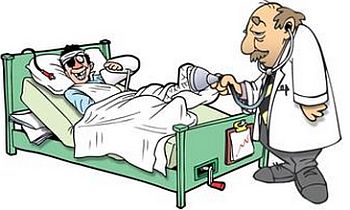 Mike Adams – It’s always interesting to study how civilizations collapse and eras of seemingly great human ingenuity come crashing to an end. Since the discovery of penicillin by Alexander Flemming in 1928, the chemical medicine industry has promised humanity that all our ills will be cured by prescription medications. We’ve been promised that cancer, diabetes, heart disease and even Alzheimer’s will all be cured once the pharmaceutical industry finally discovers the correct chemicals for treatment. But today, we’ve come to realize that Big Pharma’s chemicals aren’t curing us… they’ve just DOOMED us.
Mike Adams – It’s always interesting to study how civilizations collapse and eras of seemingly great human ingenuity come crashing to an end. Since the discovery of penicillin by Alexander Flemming in 1928, the chemical medicine industry has promised humanity that all our ills will be cured by prescription medications. We’ve been promised that cancer, diabetes, heart disease and even Alzheimer’s will all be cured once the pharmaceutical industry finally discovers the correct chemicals for treatment. But today, we’ve come to realize that Big Pharma’s chemicals aren’t curing us… they’ve just DOOMED us.
Superbugs are antibiotic-resistant bacteria. They’re immune to Big Pharma’s chemicals, in other words, and they come into existence because of the over-prescription of existing antibiotics. If you attack bacteria with chemicals for long enough, the bacteria develop biological immunity to the chemical. It happens automatically, and it’s part of Mother Nature’s survival problem solving at the cellular level. The problem, of course, is that it only takes one mutation to render an entire antibiotic drug obsolete.
As bacteria become more and more resilient to Big Pharma’s toxic chemicals, the medical efficacy of antibiotic drugs collapses, one by one. Big Pharma’s chemicals fall like dominoes, overrun by the molecular ingenuity of Mother Nature. To prevent a “superbug apocalypse,” drug companies and hospitals have kept one chemical in reserve: colistin, a “last ditch defense” against superbugs. This is the drug that’s used when everything else fails… it’s the very last option when a patient is being literally eaten alive by antibiotic-resistant bacteria.

 Andre Evans – When genetic engineering was just a frontier science, the possibilities it presented were portrayed as positive and innovative, especially for agriculture. Make crops grow fuller, faster. Eliminate the need for pesticides. Make more food available for bigger populations. However, from its onset, genetic modification has raised questions over the safety of the process and outcome, as well as crossing boundaries of nature and morals. Especially as the experiments become more bizarre.
Andre Evans – When genetic engineering was just a frontier science, the possibilities it presented were portrayed as positive and innovative, especially for agriculture. Make crops grow fuller, faster. Eliminate the need for pesticides. Make more food available for bigger populations. However, from its onset, genetic modification has raised questions over the safety of the process and outcome, as well as crossing boundaries of nature and morals. Especially as the experiments become more bizarre. Measles fear-mongering is all the rage right now, but lesser-publicized reports about deadly superbugs suggest that a much bigger public health threat might be your local hospital. Over the past several years, nearly a dozen patients at Virginia Mason Medical Center (VMMC) in Seattle, Washington, have died, not because they weren’t vaccinated, but because their doctors and nurses exposed them to drug-resistant superbugs via contaminated medical endoscopes.
Measles fear-mongering is all the rage right now, but lesser-publicized reports about deadly superbugs suggest that a much bigger public health threat might be your local hospital. Over the past several years, nearly a dozen patients at Virginia Mason Medical Center (VMMC) in Seattle, Washington, have died, not because they weren’t vaccinated, but because their doctors and nurses exposed them to drug-resistant superbugs via contaminated medical endoscopes. NaturalNews ~ It may seem obvious that any time is a good time to be well, but it rings even more true now than it did even a couple of decades ago. The threats to our health are continuously growing, and even places that are deemed safe and therapeutic have become contaminated.
NaturalNews ~ It may seem obvious that any time is a good time to be well, but it rings even more true now than it did even a couple of decades ago. The threats to our health are continuously growing, and even places that are deemed safe and therapeutic have become contaminated.